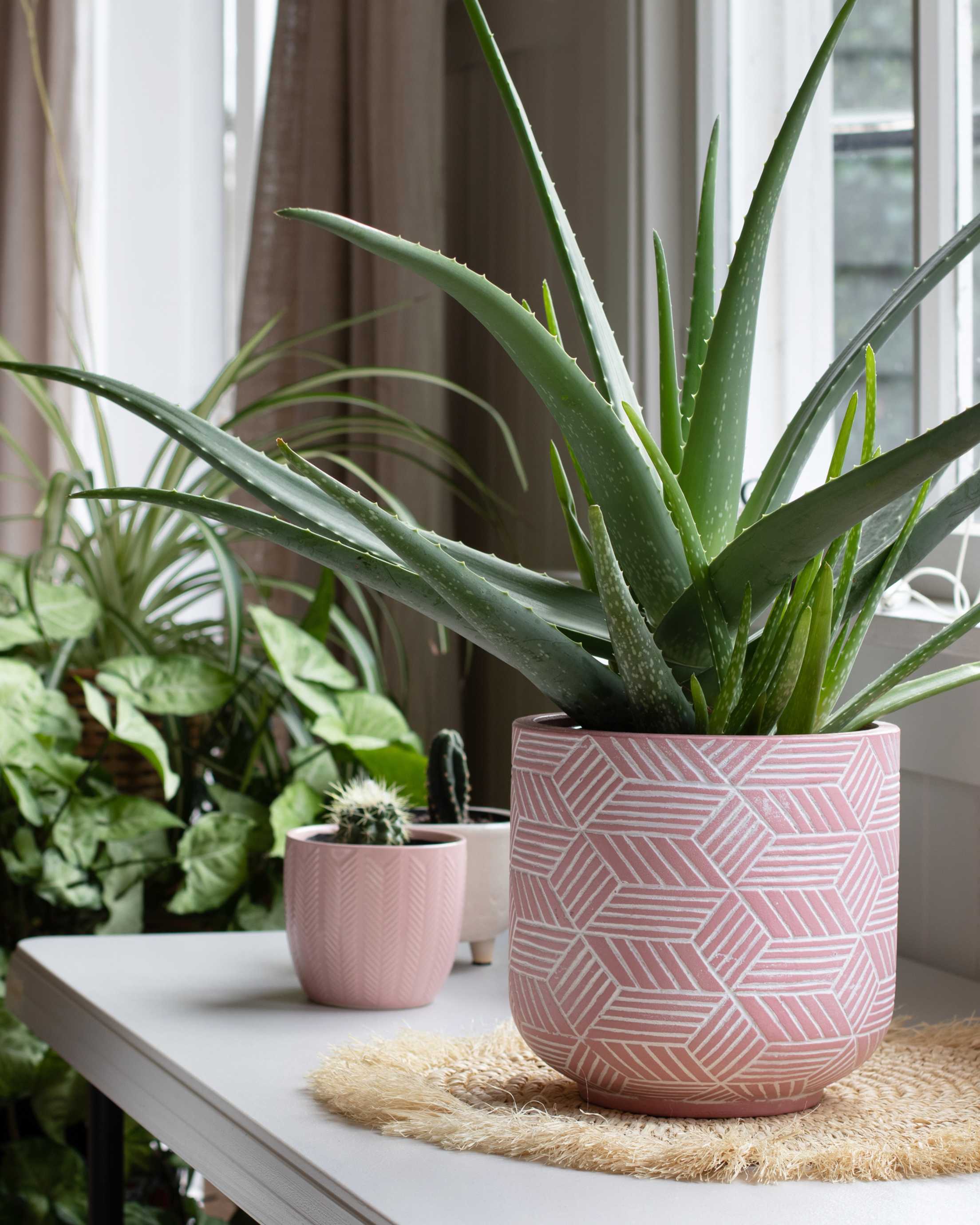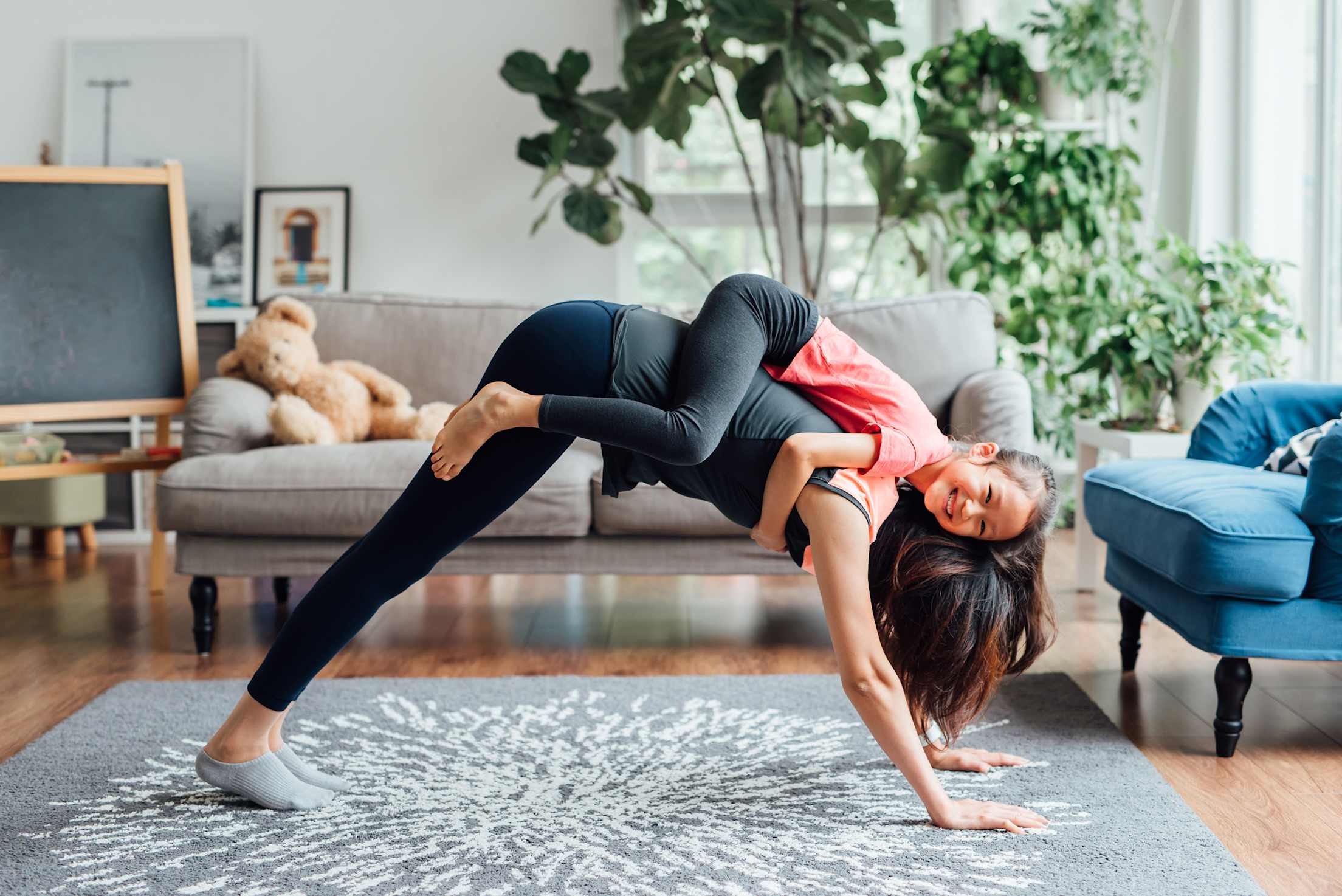
11 Tips for Growing Happy Houseplants
Follow the expert advice in this beginner’s guide to help your indoor plants thrive.

Like most people, you were probably living 90 percent of your life indoors before last year’s stay-at-home orders spurred you to find even more things to do inside. Raise your hand if you worked on jigsaw puzzles, baked sourdough, binge-watched movies, or pedaled a zillion stationary miles. Keep it raised if you also became a bit of a plant whisperer, influenced by the influx of botanical posts on social media, a desire to grow your own food, or an urge to spruce up your Zoom background.
You’re not alone. Demand for greenery blossomed in 2020. Most U.S. garden centers reported double-digit sales increases last year, as more than 18 million Americans dug into pots and plots for the first time, and habitual horticulturists expanded their collections. The popularity of indoor plants is continuing through 2021, to no one’s surprise: Adding some living color to your living quarters doesn’t require much money or space, and tending to your leafy roommates can reduce stress, improve productivity, and make you happier.
So what are you waiting for? Here are 11 tips—and basic rules of green thumb—to help you cultivate indoor plants.
1. Make plant care easy.
For starters, whenever a plant comes with a care tag, keep the tag in or near the pot—and follow its instructions. Otherwise, your local nursery or a simple web search will tell you what any given species needs. Next, heed conventional wisdom. The vast majority of plants don’t like direct light or full shade, so keep yours near windows but not right in the sun. Plants need hydration, but most don’t do well sitting in water. Let the soil dry out so the roots get oxygen between waterings, and make sure that every plant’s pot has drainage holes. Most plants thrive at indoor temperatures in standard potting soil and don’t require frequent fertilization. Rotate each plant 180 degrees every month or two to even out growth toward its light source.

If you have a bright windowsill, you can have a mini indoor garden.
2. Grow a windowsill garden.
You’ll need only a few supplies to cultivate herbs and other edible plants. Start with a selection of seeds or young plants, a broad container filled with standard potting soil, and some space next to a window that provides bright but indirect sunlight. Popular sill-to-table herbs include basil, cilantro, mint, oregano, parsley, rosemary, and sage. Water according to the care tag’s directions or whenever the soil feels dry. If you’re apt to forget, consider investing in a smart hydroponic setup, such as the ones available from Rise Gardens, which have fail-safes that include alerting you via an app when it’s time to refill the reservoir. When harvesting herbs, pinch leaves from the top of the plant to encourage new growth. Got more space on a countertop? Consider avocado saplings, tomato vines, or a mushroom box, all of which are relatively easy to propagate.
3. Consider your water use.
The West is experiencing the most severe drought in modern history. Low-water indoor plants let you keep flora in your home without tapping precious resources or flouting local water restrictions. Bryan McKenzie, who runs the gardening blog Bumper Crop Times, recommends succulents, palms, and other “plants with meaty leaves” that conserve moisture for longer periods to tolerate droughts. Air plants such as spider, snake, ZZ, and tillandsia plants, as well as orchids and pothos, are highly resilient. “Keep their pots indoors and hide them from direct sunlight unless it’s recommended,” McKenzie says. If you already own thirstier species, use clean water that might otherwise go to waste. For example, catch it in a bucket under kitchen and bathroom faucets as you wait for the cold stream to warm up. For best results, install an activated carbon filter, or let the collected water settle for 24 hours before watering plants.

Double check that a plant is safe for pets or children before bringing it home.
4. Keep your household safe.
Many popular plants—sago palms, philodendrons, oleanders, some ivies, sansevierias, and ZZ plants—present hazards to children and pets. Avoid displaying pots in places where they can topple if bumped, pulled, or chewed on. Cactus spines and rose thorns can hurt curious fingers. Flowering bulbs such as lilies, tulips, crocuses, narcissus, onions, and garlic are all toxic to dogs and cats when ingested. Safer options include African violets, bromeliads, and the lipstick plant. Before you buy, check the toxic plants list from the American Society for the Prevention of Cruelty to Animals to confirm that what you bring home won’t cause any harm.
5. Assess your level of commitment.
Some plants need more than occasional watering to thrive. If you’re just not that into care and feeding, look for sturdy, hard-to-kill greenery, including aloe vera, lucky bamboo, jade, spider, and monstera plants. “The easiest plants to take care of depend on the type of plant parent you are,” says Reagan Kastner, a houseplant stylist and TikTok influencer. “Someone who likes to ‘set it and forget it’ should look for plants like snake plants and ZZ plants, which are happy in a variety of light situations and tolerate [being given] very little water.” Someone who enjoys the ritual of watering, she adds, may want to try a pothos or philodendron, which can get by without much moisture but can also be watered more frequently. (See No. 3 if you have pets or young children.) A low-maintenance way to go is to make or buy a closed terrarium. This type of self-sustaining ecosystem, which encloses plants in a container to produce moisture through condensation, has been known to survive more than 50 years with only one watering.

Look for pots that add color or texture to your space.
6. Think like a decorator.
Most of us bring flowers, herbs, and other plants into our homes because we like the way they look. Beauty, however, can be subjective. In the trend-driven field of home décor, the plants that are currently having a moment include: the Chinese money plant, trailing succulents, cacti (bunny ears, fishbone, and monkey tail), and foliage plants (split leaf philodendron, cylindrical snake plant, sansevieria moonshine, and ficus decora). Can’t decide? “The best place to start is color,” Kastner advises. “Minimalist décor goes best with plants of similar shades of dark green, whereas eclectic décor benefits from plants with contrasting colors.” She also recommends contrasting textures when arranging plants to create an eye-catching mix.
7. Buy from sustainable growers.
Support nurseries that shun pesticides, use renewable energy and natural fertilizers, and recycle water and packaging. Nick Bavaro, chief operating officer of Rocket Farms, the nation’s largest grower of indoor flowers, says consumers can make good ecological choices. These include buying locally grown products in environmentally friendly packaging and considering each plant’s sustainability. For example, opt for species that are native, drought tolerant, and do not have significant pest or disease problems. Bavaro also advises purchasing certified organic plants. Want the houseplant that’s the most effective at removing carbon dioxide from the air? Get yourself a prayer plant.

If you can't find pre-loved plants or propagate what you have, look for sustainable nurseries.
8. Source supplies strategically.
The vast array of plant-growing accessories can be overwhelming. Focus on the basics and seek both form and function, Kastner advises. At minimum, pick up the right soil and pots, plus a watering can and a spray bottle. When choosing soil, research what best suits your plants. Some species prefer indoor potting soil, which is a mix of peat moss, vermiculite, and perlite that drains well. Others thrive in sand or special blends, such as mulch mixed with compost. “Measure to make sure you’re buying the correct size pot for each plant,” Kastner says. “Select pots in a variety of neutral colors and textures. That way, no matter how much you need to rearrange your plants, they’ll always look good.” You can also try repurposing instead of buying: Egg cartons work as seed starters; old teacups, bowls, and other vessels provide colorful pots. For reinforcements, check Facebook or Nextdoor. Both sites are rife with local groups that allow members to trade and gift indoor gardening tools, terrarium components, and perfectly healthy plants.
9. Use unconventional methods.
Research shows that talking, singing, and playing music to your plants helps them thrive. Not sure what to say or croon? Spotify offers about 100 plant-growing playlists. One study found that the ideal songs for plant growing are pop and indie folk with a tempo of 114 beats per minute. Think Stevie Wonder, The Beatles, and composer Mort Garson. Other unexpected approaches that may help your plants thrive: burying an old penny in their soil (copper acts as a fungicide) or mixing Epsom salt in their water (magnesium adds a key nutrient). You can also dust your plants’ leaves regularly and, when repotting, place a sponge inside the pot before adding soil.

Thriving plants in your living space can help reduce stress and improve productivity.
10. Reap some health benefits.
“Self-care and plant care go hand in hand,” Kastner says. “The joy of new leaves on your favorite plants can become more addicting than Instagram likes.” You don’t have to be an influencer, though, to get a boost from indoor plants. Research shows that having plants at home can help us feel happier and less stressed, sleep better, and recover faster from illness. Plants may also improve our memory, concentration, productivity, and overall ability to learn.
11. Take a gardening class.
It can take a few good tries to become proficient at managing a plant menagerie. Consider attending a growers’ workshop online or in person. There’s been an explosion of virtual classes about indoor gardening. Some involve hands-on homework and lively Q&A sessions during which you can ask all your sprouting questions. These sessions vary in price; check out those offered by Houseplant Masterclass, The Sill, Skillshare, and Oregon State University Extension Service’s Master Gardener. Prefer to learn in public after spending so much time at home? Ask your local nursery or botanical garden to recommend an in-person class near you.
Members save 25% at Plants.com. Use Promo Code: AAAPLANTS at checkout.